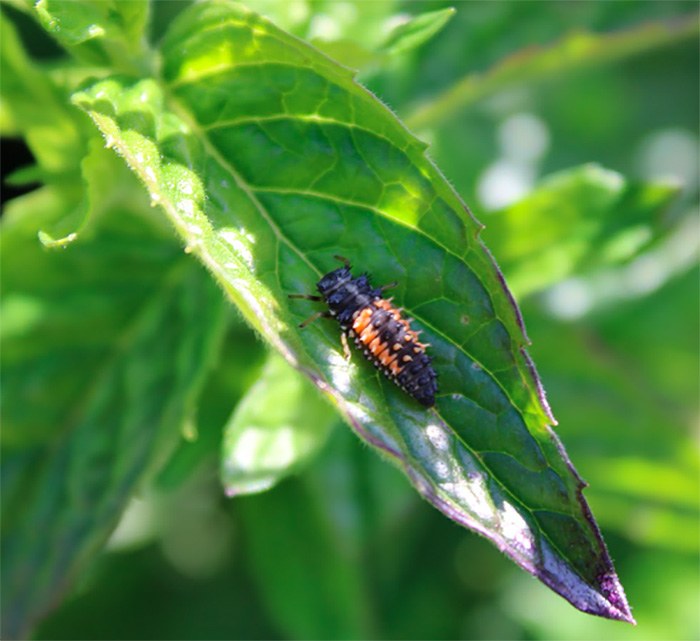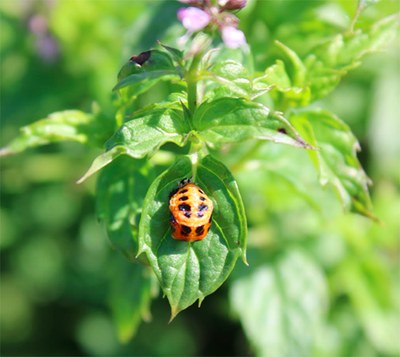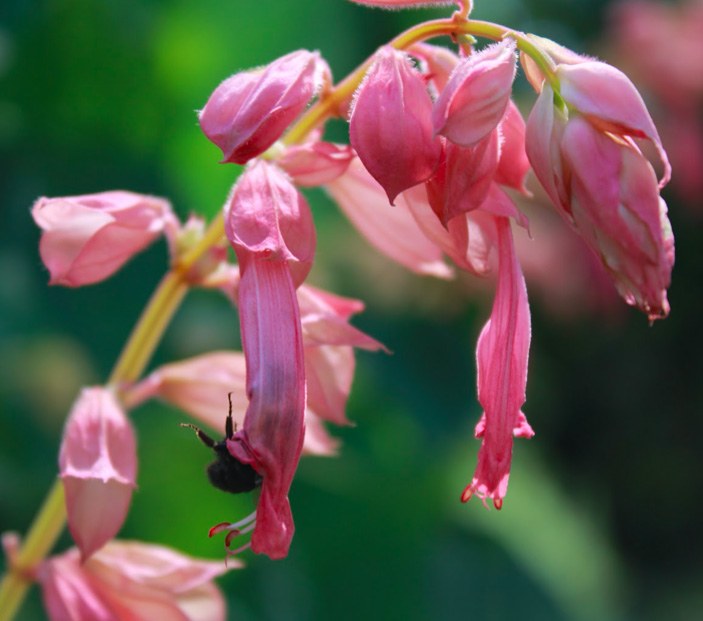Posted: October 27, 2020
As the 2020 Dutch Gold Honey Undergraduate Scholarship recipient, I worked with Dr. Natalie Boyle, an Assistant Research Professor of Entomology, to create an insect photography project.

Image 1: Lady bug Larvae
My goal for this scholarship was to broaden my knowledge on bees because I have been working on diversified vegetable farms that rely on these organisms for crop pollination.
Figure 2 Ladybug in last stage of metamorphosis
 Our project goal was for me to conduct a visual survey of insects throughout the fall season in Philadelphia, Pennsylvania. I captured quality images of pollinators and other insects each week for six weeks. I was able to follow the insect communities and observe their changes in population and behaviors. At first, I was nervous because I knew very little about photography. I ordered the camera and didn't even know how to hold it properly. It took me about three weeks to take photos efficiently. After a little while, I learned to take quality photos within less time.
Our project goal was for me to conduct a visual survey of insects throughout the fall season in Philadelphia, Pennsylvania. I captured quality images of pollinators and other insects each week for six weeks. I was able to follow the insect communities and observe their changes in population and behaviors. At first, I was nervous because I knew very little about photography. I ordered the camera and didn't even know how to hold it properly. It took me about three weeks to take photos efficiently. After a little while, I learned to take quality photos within less time.
Along with learning how to use the camera, I had to learn patience. Insect photography is not easy, many of the images come out blurry because bees are working to collect nectar as fast as they can. While foraging, they zoom from flower to flower without taking a break. By the time I got the camera to focus, they would already be buzzing away to the next flower. I mastered the art of patience by watching the insect, waiting for the right moment to press the shutter button. I was able to watch these complex organisms closely through the lens of the camera which is better than the naked eye. I was able to see their tiny hairs, the intricate patterns on each one's wings, and their big compound eyes. My favorite part was watching their proboscis, or straw-like mouth part, elongate into the anther to sip up the nectar (see image 3).

Figure 3
I've also had a great time watching bumblebees try to fit their furry, chubby bodies into the tunnels of scarlet sage flowers that are almost too narrow for them (see image 4).

Figure 4
My perspective on insects has changed tremendously because I had to get closer than comfortable to take quality photos. As children, we're taught to be scared of bees and wasps because of how badly their stings hurt. This experience has taught me that they really don't want to hurt you at all. They only care about collecting resources for their colony without being disturbed. Overall, I've connected with these insects in a rare way because I've spent so much time up close with them. I now feel a deeper appreciation for insects and I hope to share it with others in the future through conservation efforts.
By J. Lana Mejias

